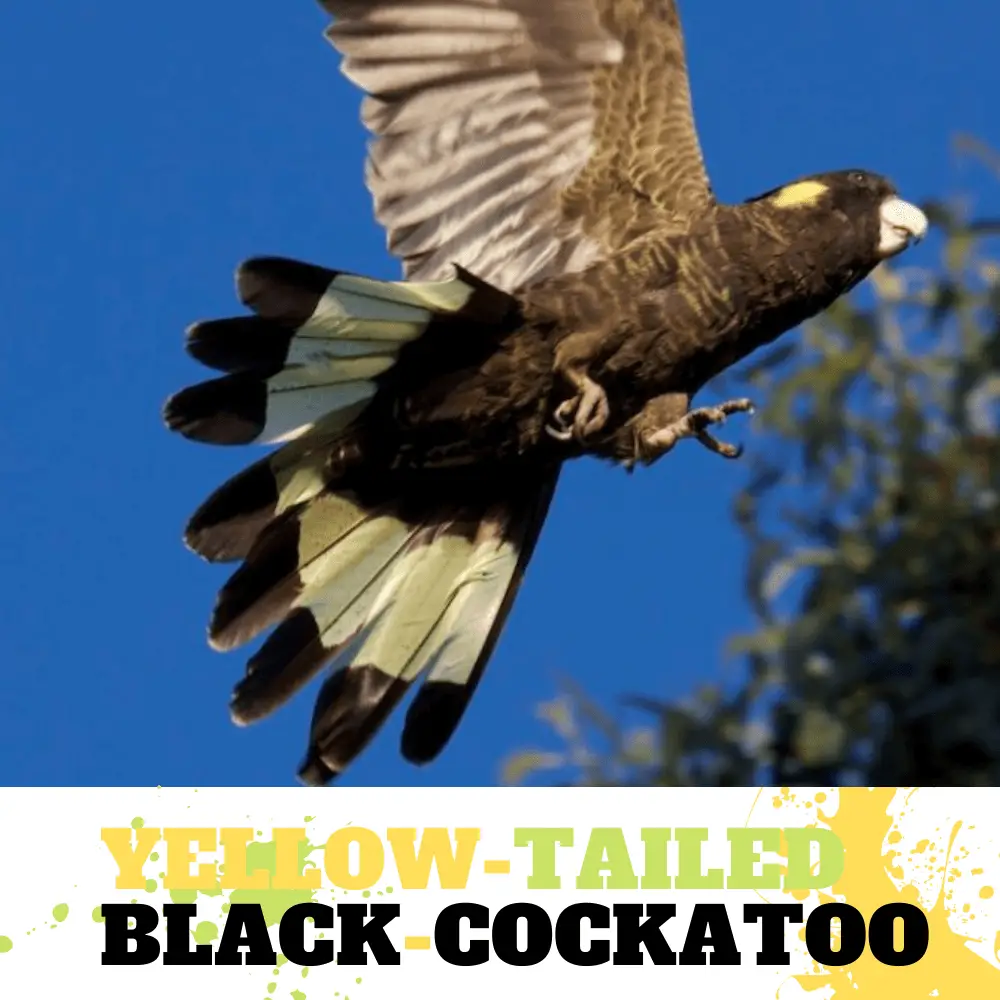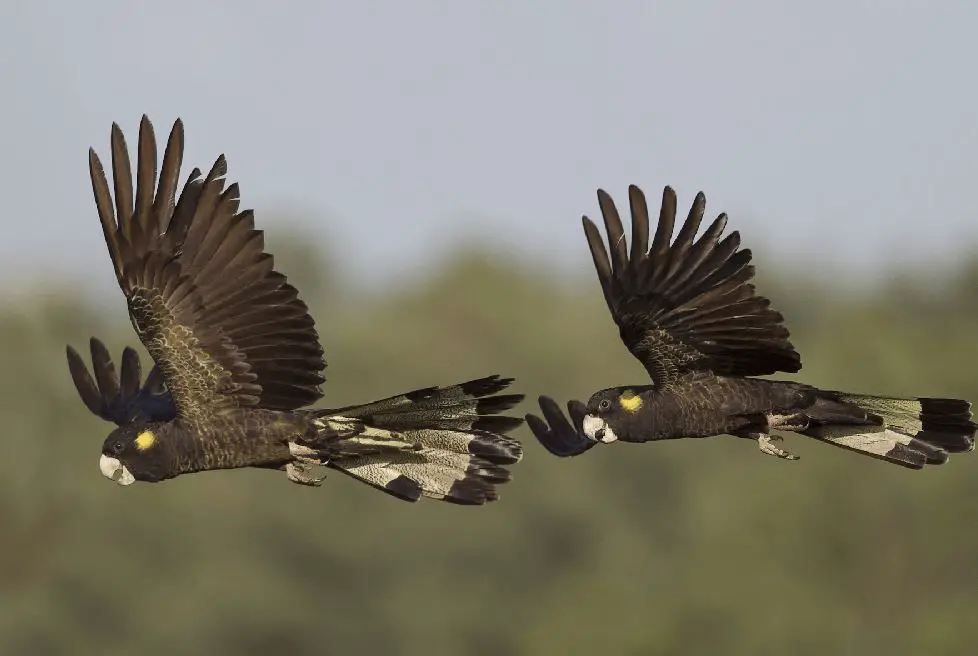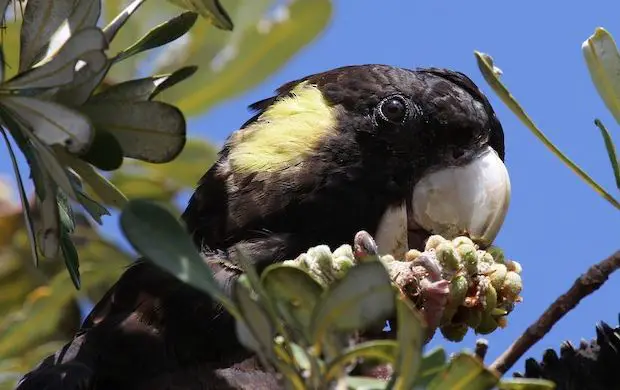
Yellow-tailed Black Cockatoo: 55–60 cm; 610–900 g. Male body plumage dusky black with upper body and wing-covert feathers finely edged buff; yellow ear-covert patch; broad yellow band in tail spotted dark brown, with central two feathers all black; bill dark grey, feet grey-brown; eye dark brown with pink periophthalmic ring.
Female as male, but cheek patch brighter and bigger; bill bone-coloured; periophthalmic skin dark grey. Immature as an adult female. Race xanthanota is smaller in wing and tail; race whiteae differs from xanthanota essentially only in the width of the maxilla.
Systematics History
Editor’s Note: This article requires further editing work to merge existing content into the appropriate Subspecies sections. Please bear with us while this update takes place.
Closely related to Z. baudinii and Z. latirostris; has been considered conspecific with the latter, and occasionally with the former. S races whiteae and xanthanota are considered by some possibly to represent a separate species.
The tasmanian race is sometimes listed erroneously as xanthanotus or xanthonotus, but the original spelling as given below is correct. Three subspecies were recognized.
Subspecies
SUBSPECIES
Calyptorhynchus funereus funereus Scientific name definitions
C. f. funereus+1
Distribution
EC Queensland (Emerald) S to E Victoria, in SE Australia.
SUBSPECIES
Calyptorhynchus funereus whiteae Scientific name definitions
Distribution
Eyre Peninsula (SC South Australia) E, including Kangaroo I, to S Victoria.
SUBSPECIES
Calyptorhynchus funereus xanthanotus Scientific name definitions
C. f. xanthanotus
Distribution
Tasmania and islands in the Bass Strait.
Yellow-tailed Black Cockatoo Distribution
Editor’s Note: Additional distribution information for this taxon can be found in the ‘Subspecies’ article above. In the future, we will develop a range-wide distribution article.
Yellow-tailed Black Cockatoo Habitat
Coastal heath, woodland, forest; also pine plantations along coast and adjoining the Great Dividing Range.
Yellow-tailed Black Cockatoo Movement

Poorly known or understood; nominate race tends to wander nomadically in parties of 10–20 birds when not breeding. Birds of race xanthanota sometimes congregate in large flocks of up to 100 to feed on exotic pine cones.
Yellow-tailed Black Cockatoo Diet

what do yellow tailed black cockatoos eat
Nominate race eats both seeds and insect larvae, the latter extracted in a specialized manner from infested Eucalyptus and Acacia saplings, using elongated upper mandible;
initially, a “chopping board” of bark is stripped to provide a platform on which the Yellow-tailed Black Cockatoo stands in order to excavate cossid moth larvae from stems of saplings.
Race xanthanota is primarily a seed-eater, and large flocks feed on cones of exotic Pinus radiata plantations, tearing the cones apart.
Yellow-tailed black Cockatoo (Calyptorhynchus funereus) HD Video clip 1 / 2
SOURCE: Tim Siggs
Sounds and Vocal Behavior
The commonest call is a diagnostic over slurred plaintive wail ending in a harsher tone “wheEEeargh”, given in flight and when perched.
While feeding, birds in a group utter several grating and squealing notes. An alarm calls a harsh screech. Immatures utter a repeated very grating nasal “rrrruh”.
Yellow-tailed Black Cockatoo Breeding
Breeds Apr–Jul in N Australia; Jan–May in N New South Wales; Dec–Feb in S New South Wales; and Oct-Mar in South Australia, Victoria, and Tasmania. Nest is a bed of woodchips in a large tree hollow.
Two eggs; incubation 28–29 days, by female only; chick has long, dense yellow down; usually only one nestling survives; fed by both parents, and leaves the hollow after three months, remaining with parents until at least next breeding season.
Yellow tailed Black Cockatoo Conservation Status
are yellow tailed black cockatoos rare:
Not globally threatened. CITES II. As with most other cockatoos, long-term existence depends on the continued availability of hollow trees for nesting in. No race is currently considered to be threatened, and all have adapted to recent developments in their habitat, namely eucalypt and pine plantations.




















